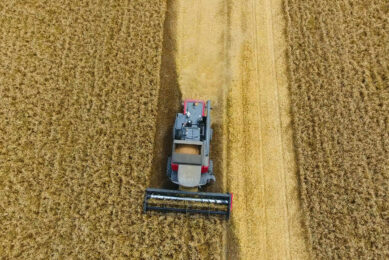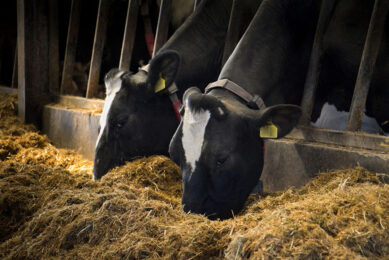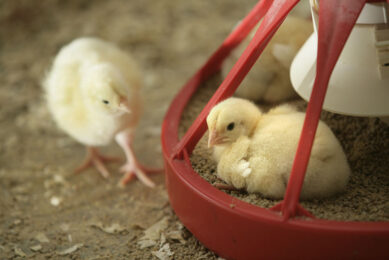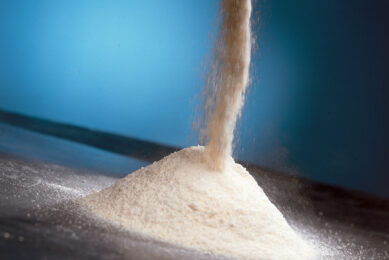Declining livestock affects Hungarian feed industry
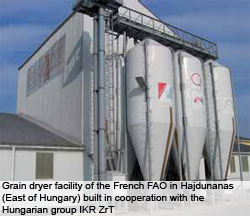
Despite a steady decrease in animal numbers, predominantly in pig production, the Hungarian feed industry is finding ways of facing this challenge through foreign partnerships and investments. The pet food industry is blooming with activity, particularly in it’s exporting efforts.
According to official Hungarian statistics, the total number of pigs in the country dropped from 12 million to less than 4 million in 10 years. The number of dairy cows dropped in the same time from 407,000 to 324,000. With a total production of 4.1 million tonnes in 2007 and 2008, Hungarian feed production follows the same trend, with a drop of almost 1 million tonnes every 5 years since 1998 (Table 1). With a total of 1.7 million tonnes in 2008, poultry feed has the first position for the first time in the Hungarian feed industry’s history, closely followed by pigs, and then by cattle feed which has been stable at around 500,000 tonnes for 10 years.
“The main problem of our feed industry is the regular destocking of the country,” says Zsofia Potsa, secretary general of the Hungarian Grain and Feed Association, who welcomes us in her office in the centre of Budapest. Since 1991, the Hungarian Grain and Feed Association has successfully represented the interest of millers, grain traders, stock keepers, feed manufacturers and pasta producers. The four sections of the association (traders, grain processors, feed manufacturers and pasta producers) has gathered 150 members, of which around 40 are for feed.
“Premix producers have a better representation in the association (around 70% of the total Hungarian producers) than the compound feed producers”, says Potsa, who adds that Hungary has about 600 registered companies producing feed. Of this total, only 250 companies sell feed to clients. This implies that most companies produce for themselves. The biggest feed producers today are mainly foreign companies and subsidiaries of Cargill, Provimi or Nutreco (Table 3). “In 2007, Cargill completed the acquisition of Agro-grain after previously owning a minority shareholding in the company”, explains Francis De Rosa, Cargill Corporate Affairs Europe/Africa. Agrograin is a leading Hungarian grain, oilseeds and protein trading company with 21 grain storage locations including two river ports on the Danube. Cargill in Hungary has activities in grain, oilseed and protein trading, storage and logistics, animal feed formulation, production and distribution, sales of starch and starch derivatives. Granit Hungary, the Hungarian subsidiary company of the French Granit Négoce (grain trading company of Epis Centre cooperative) is another example of foreign investment on the Hungarian grain market.
Over capacity in production
Vitafort, a Hungarian company in partnership with the French InVivo since 1991, has produced 730,000 t of feed and premix in 2008 and is one of the leaders in the market. No significant new projects in Hungary have been initiated in the feed industry for some years due to an overcapacity of production. Some new investments were on the table with the help of European funds, but the current economic crisis may halt their progress, explains Potsa. “The crisis will force our members to work with lower credit possibilities, which may disturb the feed producers’ job as most of them need to buy their grain for several months with credits. We are observing the banks’ behaviour and are talking with the competent authorities”, she adds.
Regarding raw material supply, Hungary has always been self-sufficient for grain. With a total of 4.8-5 million tonnes of annual needs for grain, the Hungarian feed industry mainly uses maize (28.8-3 million t), followed by other cereals (barley, triticale, oats) for about 1.2 million t, and then wheat (0.7 million t). The last grain harvest in 2008 was “very good” totalling 16.5 million t, of which 8.9 million t of maize was exported to EU.
With protein sources on the other hand, the situation is quite different as the country needs to import most of its needs (Table 2). “The concentration trend in the Hungarian feed industry, started 15 years ago, and is still going on but at a slower speed”, says Potsa who thinks Hungary has no real agricultural and livestock policy. “Our hope for 2009 would be to keep the level of feed production of 2008.” With an annual solid growth of 5%, pet food is the exception of this rather dark overview of the Hungarian feed industry.
Gyöngyi Szórádi, Director of the Hungarian Pet food Association, explains to FeedTech the main facts and figures of the pet food industry of her country. “The Hungarian Pet food Association was founded on 25 November, 2004. Founder companies represent over 90% of the Hungarian pet food industry. The Association’s predecessor was the Hungarian Pet food Manufacturers Association (founded in 1992). The new name and organisation structure was necessary to adapt to the changes of the operating environment over the previous 15 years, such as:
All these changes needed more effective communications, representation of industry interests and closer cooperations between the industry companies. The Hungarian Pet food Association is a FEDIAF member (European Pet Food Industry Federation, www.fediaf.org). Hungary is a top 5 pet food exporter country in Europe due to manufacturers like MARS, Nestlé Purina and Pet-Hungária (a Provimi company) which are the largest members in terms of production. Other members are Vitakraft Aquafood, Colgate-Palmolive (Hill’s), Royal Canin Kft. and Alpha-Pet Food (distributor of IAMS, Eukanuba) who represent worldwide known pet food brands” |
Investments
The recent Agro-Mash Expo which took place in Budapest from 27-31 January was a good opportunity to measure the dynamics of the Hungarian agriculture. Since most exhibitors were farm machinery suppliers, it was also possible to meet the numerous grain drying and handling equipment suppliers. “We provide drying facilities for large farms of 300-500 ha and we operate in a growing market”, explains Per Larsson, director of the Swedish company Tornum, a supplier of solutions for modern grain management in agriculture and the grain industry. With established sales company in Finland, Poland, Hungary and Romania, Tornum presented a new product in Budapest: the Heat Recovery Dryer HR2 which recycles up to 15% of the heat.
“We produce all our products ourselves and the preservation of the grain quality is of high importance for us,” said Jean-Louis Cariolot, CEO of the French company FAO. They were also present in Budapest, sharing a stand with its Hungarian partner IKR. FAO has been producing drying, cleaning and grain storage equipment for 150 years, and the company started a partnership with the Hungarian group IKR for Hungary and the neighbouring countries two years ago. “Our cooperation consists in renovating the existing IKR drying facilities or in building new sites”, explains Cariolot whose company already launched four projects in Hungary, of which a drying facility in Hajdunanas in the Eastern part of Hungary launched last September.
“We built a new plant eight years ago, 30 km from Budapest, and we produce around 7,000 t per year, of which 3,700 t of premix, 800 t of concentrate and 2,000 t of piglet feed,” says Horvathné Bozso Aranka, director of Hunga-Mix, a daughter company of Hunga-pig, Hungary’s leader in pig production. “We import most of our raw materials from Western Europe, and milk powder from Belgium and the Netherlands”, explains the Hungarian director who complains about the high price increase of most of the raw materials. The company is about to launch a piglet starter without antibiotics as the legislation will change in 2009. In the grain business, several foreign companies made significant investments in recent years, such as Cargill which has been active in Hungary since 1995 and operates 24 plants and offices in the country (21 of which are used for grain storage).
* Philippe Caldier is a freelance journalist




